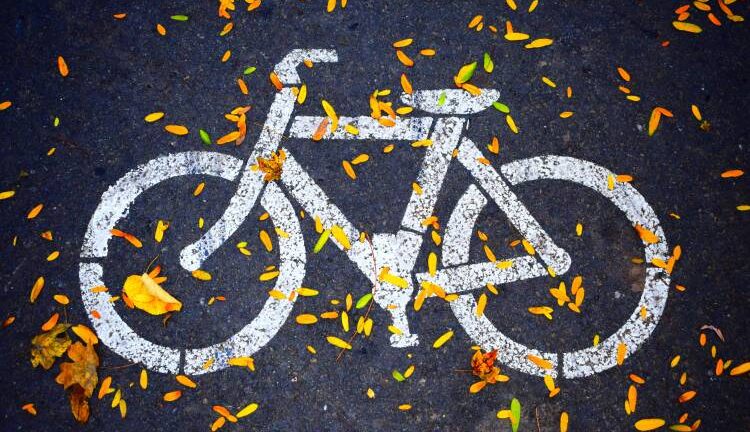Who Invented the Bicycle
The bicycle stands as a timeless icon of human ingenuity and innovation and the question “Who invented the bicycle” pops up in our mind. From its humble beginnings as a wooden contraption with no pedals to the sleek, high-tech machines of today, the evolution of the bicycle mirrors advancements in transportation, technology, and societal change. This mode of personal mobility has not only shaped urban landscapes and transportation systems but also influenced cultural norms and individual freedoms. Delving into its history unveils a journey marked by ingenious inventions, societal needs, and the quest for efficiency in movement—a journey that continues to resonate profoundly in the modern world.
Historical Context:
In the early 19th century, the world was undergoing profound transformations. Industrialization was reshaping economies and societies, prompting a growing need for faster and more efficient modes of transportation. This era witnessed the emergence of the first mechanical bicycles, starting with Karl Drais’ ‘Laufmaschine’ or ‘running machine’ in 1817. Often referred to as the draisine, this early prototype featured two wheels aligned along a wooden frame, propelled by the rider pushing their feet against the ground.
The draisine captured the imagination of inventors and enthusiasts alike, sparking a wave of experimentation and innovation. By the mid-19th century, pedals were added to the front wheel, creating the velocipede or ‘boneshaker,’ known for its bumpy rides over cobblestone streets. This era saw various iterations and improvements, leading to the development of the ‘ordinary’ or penny-farthing in the late 1860s—a high-wheeled bicycle with a large front wheel and a smaller rear wheel.
As the 19th century progressed, so did the sophistication of bicycle designs. The invention of the safety bicycle in the 1880s, featuring two equally-sized wheels, a chain-driven rear wheel, and a diamond-shaped frame, revolutionized cycling. This more stable and comfortable design made cycling accessible to a broader segment of the population, including women, who found the safety bicycle liberating and empowering.
The evolution of the bicycle not only impacted personal transportation but also played a pivotal role in societal changes. It provided individuals with newfound mobility, contributed to the expansion of urban centers, and influenced leisure activities and sports. Cycling became a symbol of freedom, promoting health and fitness while fostering a sense of adventure and exploration.
Early Prototypes and Precursors
- Draisine (1817): Invented by Karl Drais, this two-wheeled, pedal-less device, also known as a ‘Laufmaschine’ or running machine, is considered the forerunner of the bicycle. It was propelled by pushing the feet against the ground.
- Velocipede Era (1860s): This era saw the development of various velocipedes, including the ‘boneshaker’ characterized by its large front wheel and solid rubber tires. These early bicycles were uncomfortable and difficult to ride.
Major Innovations
- Pedals and Chain Drive: In the 1860s, pedals were added to the front wheel of the velocipede, marking a significant advancement. This allowed for more efficient propulsion and easier riding.
- Safety Bicycle (1880s): John Kemp Starley’s invention of the safety bicycle with equally sized wheels, a diamond frame, and a chain drive revolutionized cycling. It was safer, more comfortable, and accessible to a wider range of people.
- Pneumatic Tires: Invented by John Boyd Dunlop in 1888, pneumatic (air-filled) tires greatly improved the comfort and performance of bicycles by providing better shock absorption and traction.
20th Century Advancements
- Derailleur Gears: Developed in the early 20th century, derailleur gears allowed cyclists to change gears easily, adapting to different terrains and speeds.
- Materials and Frame Designs: Advances in materials such as aluminum, titanium, and carbon fiber have led to lighter and stronger bicycle frames. Frame geometries have also evolved for specific riding styles and preferences.
- Mountain Bikes and Specialized Designs: Starting in the 1970s, mountain bikes emerged with features like wider tires, suspension systems, and durable frames, catering to off-road cycling enthusiasts.
Modern Developments
- Electric Bicycles (e-bikes): Growing in popularity since the late 20th century, e-bikes integrate electric motors to assist pedaling, making cycling more accessible and practical for commuting and recreational purposes.
- Folding Bicycles: Designed for urban commuters and travelers, folding bicycles can compactly fold into a smaller size for easy storage and transport.
Cultural and Social Impact
- Transportation: Bicycles have been crucial in providing affordable, environmentally friendly transportation options worldwide, especially in congested urban areas.
- Sports and Recreation: Cycling has become a popular sport and recreational activity, with events like road races, mountain biking, and BMX competitions attracting enthusiasts globally.
- Health and Wellness: Cycling promotes physical fitness and mental well-being, contributing to a healthier lifestyle for individuals of all ages.
Future Directions

- Smart Bikes: Integration of technology like GPS navigation, fitness tracking, and connectivity with smartphones to enhance the cycling experience.
- Sustainable Design: Continued focus on sustainability in materials and manufacturing processes to reduce environmental impact.
Exploring these aspects not only showcases the technical evolution of bicycles but also underscores their cultural, social, and environmental significance. It’s a testament to human innovation and adaptation in pursuit of efficient and enjoyable personal mobility.
Here are some Frequently asked questions about bicycle.
Certainly! Here are some commonly asked questions about bicycles along with concise answers:
1. Who invented the bicycle?
- The modern bicycle evolved from early prototypes like the draisine or ‘Laufmaschine’ invented by Karl Drais in 1817. However, the concept of a pedal-driven bicycle as we know it today developed throughout the 19th century with contributions from various inventors like Pierre Michaux and John Kemp Starley.
2. How does a bicycle work?
- A bicycle works by converting the rider’s pedaling motion into forward movement through a chain and sprocket mechanism. Pedaling turns the crank, which rotates the chainring connected to the rear wheel via a chain. The rotational force propels the bicycle forward.
3. What are the parts of a bicycle called?
- Frame: The main structure of the bicycle.
- Wheels: Includes rims, spokes, and tires.
- Handlebars: Used for steering.
- Saddle: Seat for the rider.
- Pedals: Attached to cranks for powering the bicycle.
- Brakes: Mechanisms for stopping the bicycle.
- Gears: Components that vary pedaling resistance.
4. How to ride a bicycle?
- Mounting: Place one foot on a pedal in the down position.
- Pedaling: Push down on the pedal to start moving.
- Steering: Use handlebars to steer left or right.
- Balancing: Maintain balance by keeping your body centered.
- Braking: Apply brakes gradually using the hand levers or pedals.
5. What are the benefits of cycling?
- Cycling promotes cardiovascular fitness.
- It helps in weight management and muscle toning.
- Reduces stress and improves mental well-being.
- It’s a low-impact exercise suitable for all ages.
- Provides an eco-friendly mode of transportation.
6. What types of bicycles are there?
- Road Bikes: Designed for speed on paved surfaces.
- Mountain Bikes: Built for off-road trails with rugged tires and suspension.
- Hybrid Bikes: Blend features of road and mountain bikes for versatility.
- City or Commuter Bikes: Ideal for urban commuting with comfort features.
- BMX Bikes: Used for stunt riding and racing on dirt tracks.
7. How to choose the right size bike?
- Measure your inseam length to determine frame size.
- Consider your height and reach for handlebar comfort.
- Test ride different sizes to find the most comfortable fit.
8. How to maintain a bicycle?
- Regularly clean and lubricate the chain and drivetrain.
- Check tire pressure and inflate as needed.
- Inspect brakes for wear and adjust or replace brake pads.
- Ensure all bolts are tight and components are properly aligned.
9. How to fix a flat tire on a bicycle?
- Remove the wheel and locate the puncture.
- Use tire levers to remove the tire from the rim.
- Patch or replace the inner tube.
- Reassemble the tire and inflate to the recommended pressure.
10. Are electric bikes worth it?
- Electric bikes (e-bikes) provide assistance while pedaling, making cycling easier and more accessible.
- They’re ideal for longer commutes or hilly terrain.
- E-bikes can be more expensive initially but offer savings in transportation costs over time.
Bicycle Crunches
Bicycle crunches are a popular abdominal exercise that targets multiple muscle groups in the core. Here’s how to do them:
How to Perform Bicycle Crunches:
- Starting Position:
- Lie flat on your back on a mat or a comfortable surface.
- Place your hands lightly behind your head, elbows pointing out to the sides. Avoid pulling on your neck.
- Leg Position:
- Lift your legs off the ground, bending them at the knees to form a 90-degree angle.
- Your calves should be parallel to the ground, and your thighs should be perpendicular.
- Movement:
- Engage your core muscles by tightening your abs.
- Simultaneously lift your shoulders and upper back off the ground, aiming to bring your right elbow towards your left knee.
- At the same time, straighten your right leg out in a diagonal position, as if you are riding a bicycle.
- Your left knee should bend towards your chest as you twist your torso.
- Return to the starting position and repeat on the other side, bringing your left elbow towards your right knee while straightening your left leg.
- Breathing:
- Exhale as you crunch and twist your torso, inhale as you return to the starting position.
- Repetitions:
- Aim for controlled movements. Start with a manageable number of repetitions, such as 10-15 per side, and gradually increase as your core strength improves.
Tips for Bicycle Crunches:
- Focus on Form: Ensure your lower back stays pressed into the mat to protect your spine. Avoid straining your neck by keeping your gaze upward and not pulling on your head with your hands.
- Engage Your Core: The power for the movement should come from your abdominals. Keep them engaged throughout the exercise.
- Controlled Movements: Avoid rushing through the exercise. Focus on smooth, controlled motions to maximize effectiveness and minimize injury risk.
- Breathing: Coordinate your breathing with your movements to maintain rhythm and optimize oxygen flow to your muscles.
Benefits of Bicycle Crunches:
- Core Strength: Targets the rectus abdominis (six-pack muscles), obliques (side abs), and deeper core muscles for overall core stability.
- Flexibility: Improves spinal flexibility and range of motion through the twisting motion.
- Functional Fitness: Enhances muscle coordination and balance, which can translate to improved performance in various sports and daily activities.
Incorporate bicycle crunches into your abdominal workout routine to strengthen your core and enhance overall fitness. Adjust the intensity by modifying the number of repetitions and pace to suit your fitness level.

